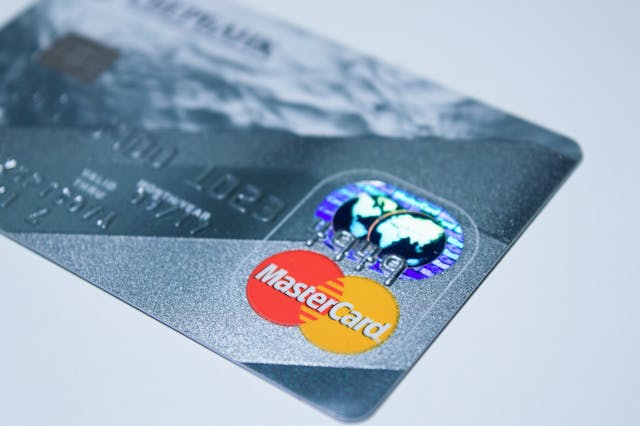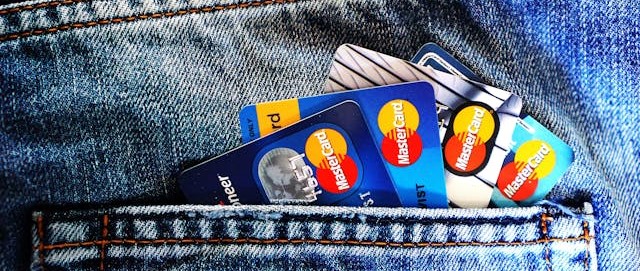Mastercard’s marketing strategy is simple yet profound: they don’t just sell a service; they sell an experience. This philosophy is encapsulated in their iconic “Priceless” campaign, which has been running for over two decades. The genius behind this campaign lies in its ability to transcend the transactional nature of the product. Instead of focusing on the nuts and bolts of payment processing, Mastercard zeroes in on the moments and experiences that money can’t buy.
The “Priceless” campaign began in 1997. The message was clear and resonant: “There are some things money can’t buy. For everything else, there’s Mastercard.” This tagline, while seemingly straightforward, opened a vast creative canvas. It allowed the brand to explore countless human experiences, each more relatable than the last. From the joy of a child’s first baseball game to the magic of a perfect wedding day, Mastercard positioned itself as the enabler of these priceless moments.
Digital Transformation and Innovation
As the world transitioned into the digital age, Mastercard was not content to rest on its laurels. They embraced technology not as a mere tool but as a core component of their marketing strategy. The company understood that the digital landscape offered unprecedented opportunities to connect with consumers on a deeper level.
One of the key innovations in Mastercard’s digital strategy was their foray into contactless payments. With the rise of smartphones and wearable technology, they saw an opportunity to make transactions seamless and effortless. Their “Tap & Go” campaign highlighted the ease and convenience of contactless payments, targeting tech-savvy consumers who valued speed and efficiency.
Mastercard also leveraged social media to great effect. They recognized early on that social platforms were not just channels for communication but venues for engagement. By creating content that resonated with users and encouraged sharing, they amplified their brand presence exponentially. The use of influencers and brand ambassadors further helped to cement their place in the digital conversation.

Sponsorships and Partnerships
Sponsorships have been a cornerstone of Mastercard’s marketing strategy. They have strategically aligned themselves with events and entities that evoke strong emotional responses. This alignment is not just about visibility; it’s about association with experiences that consumers value deeply.
Sports have been a significant focus for Mastercard. Their long-standing partnership with the UEFA Champions League is a prime example. This partnership goes beyond mere branding; it is an integral part of the fan experience. By sponsoring one of the most prestigious football tournaments in the world, Mastercard taps into the passion and excitement of millions of fans. They enhance this connection through exclusive content, promotions, and on-site activations, making Mastercard synonymous with the joy of football.
In addition to sports, Mastercard has also invested heavily in the arts and entertainment. Their partnership with the GRAMMY Awards exemplifies their strategy of associating with cultural milestones. Music is a universal language, and by aligning with one of its most celebrated events, Mastercard positions itself at the heart of cultural conversations.
Priceless Causes
In recent years, Mastercard has expanded the “Priceless” concept to include social good. Recognizing that consumers, especially younger ones, are increasingly driven by purpose, they launched the “Priceless Causes” initiative. This initiative leverages Mastercard’s resources and reach to support various social causes, from fighting hunger to promoting financial inclusion.
One notable campaign under this initiative is the “Stand Up To Cancer” partnership. By integrating charitable giving into their core marketing strategy, Mastercard allowed consumers to contribute to cancer research simply by using their cards. This not only provided a tangible way for people to make a difference but also reinforced Mastercard’s image as a brand that cares about more than just profits.
Data-Driven Insights
Mastercard’s marketing strategy is also heavily informed by data. In an era where data is often touted as the new oil, Mastercard has harnessed its vast troves of transactional data to gain insights into consumer behavior. These insights inform their marketing campaigns, allowing for a level of personalization and relevance that is crucial in today’s cluttered media landscape.
By analyzing spending patterns, Mastercard can tailor their messaging to different segments of their audience. For instance, they can identify frequent travelers and target them with offers and promotions that enhance their travel experience. This level of precision ensures that their marketing efforts are not only effective but also efficient.
Adaptability and Resilience
The global COVID-19 pandemic posed unprecedented challenges to businesses worldwide. Mastercard’s response showcased their adaptability and resilience. As consumer behavior shifted dramatically, they quickly pivoted their marketing strategy to stay relevant.
One of the key shifts was towards digital and contactless payments, which saw a surge in demand as people sought safer ways to transact. Mastercard’s marketing highlighted the safety and convenience of these payment methods, reassuring consumers in uncertain times. Their “Together, Everything Is Priceless” campaign emphasized community and connection, resonating with consumers’ desire for solidarity.
Embracing Sustainability
In recent years, Mastercard has also placed a significant emphasis on sustainability. Recognizing the growing consumer concern for environmental issues, they have integrated sustainability into their marketing strategy. This is not just a nod to trends but a commitment to long-term change.
Their “Priceless Planet Coalition” aims to restore 100 million trees by 2025. This initiative brings together consumers, businesses, and governments to tackle climate change collectively. By positioning themselves as leaders in sustainability, Mastercard appeals to environmentally conscious consumers and strengthens their brand’s future relevance.

What Marketers can Learn from Mastercard’s Strategy
Mastercard’s marketing strategy is a masterclass in brand building. They have consistently demonstrated an ability to evolve with the times while staying true to their core message of enabling priceless experiences. Their success is a testament to the power of a well-defined and executed marketing strategy, one that other brands would do well to learn from.
By focusing on the emotional connections their product can facilitate, embracing digital transformation, strategically leveraging sponsorships, and committing to social and environmental causes, Mastercard has built a brand that is not just relevant but beloved. This is a story of marketing done right, a beacon for those looking to make their mark in the industry.
Mastercard’s marketing strategy offers valuable lessons for marketers aiming to elevate their own brands.
1. Create Emotional Connections
Mastercard’s “Priceless” campaign is a prime example of how to connect with consumers on an emotional level. By focusing on experiences and moments that money can’t buy, Mastercard taps into the universal human desire for meaningful connections. Marketers should strive to create campaigns that resonate emotionally, turning products or services into enablers of memorable experiences.
2. Embrace Digital Transformation
Mastercard’s proactive approach to digital innovation, particularly with contactless payments, highlights the importance of staying ahead of technological trends. They understood that convenience and efficiency are critical to modern consumers. Marketers should leverage digital tools and platforms to enhance customer experiences, streamline transactions, and engage with tech-savvy audiences.
3. Leverage Sponsorships for Brand Association
Mastercard’s strategic sponsorships, such as their partnerships with the UEFA Champions League and the GRAMMY Awards, demonstrate the power of associating your brand with popular and emotionally charged events. These partnerships not only increase brand visibility but also align the brand with experiences that consumers value. Marketers should seek sponsorship opportunities that resonate with their target audience’s passions and interests.
4. Integrate Social Good into Your Brand
Mastercard’s “Priceless Causes” initiative shows how integrating social responsibility into your marketing strategy can enhance brand perception and loyalty. By supporting causes like cancer research and environmental sustainability, Mastercard appeals to consumers who prioritize purpose-driven brands. Marketers should identify social causes that align with their brand values and find authentic ways to contribute and engage their audience.
5. Utilize Data-Driven Insights
Mastercard’s use of transactional data to inform their marketing campaigns underscores the importance of data-driven decision-making. By analyzing consumer behavior and spending patterns, they tailor their messaging to be more relevant and personalized. Marketers should harness the power of data analytics to gain insights into their audience, optimize their campaigns, and deliver more personalized and effective marketing messages.

